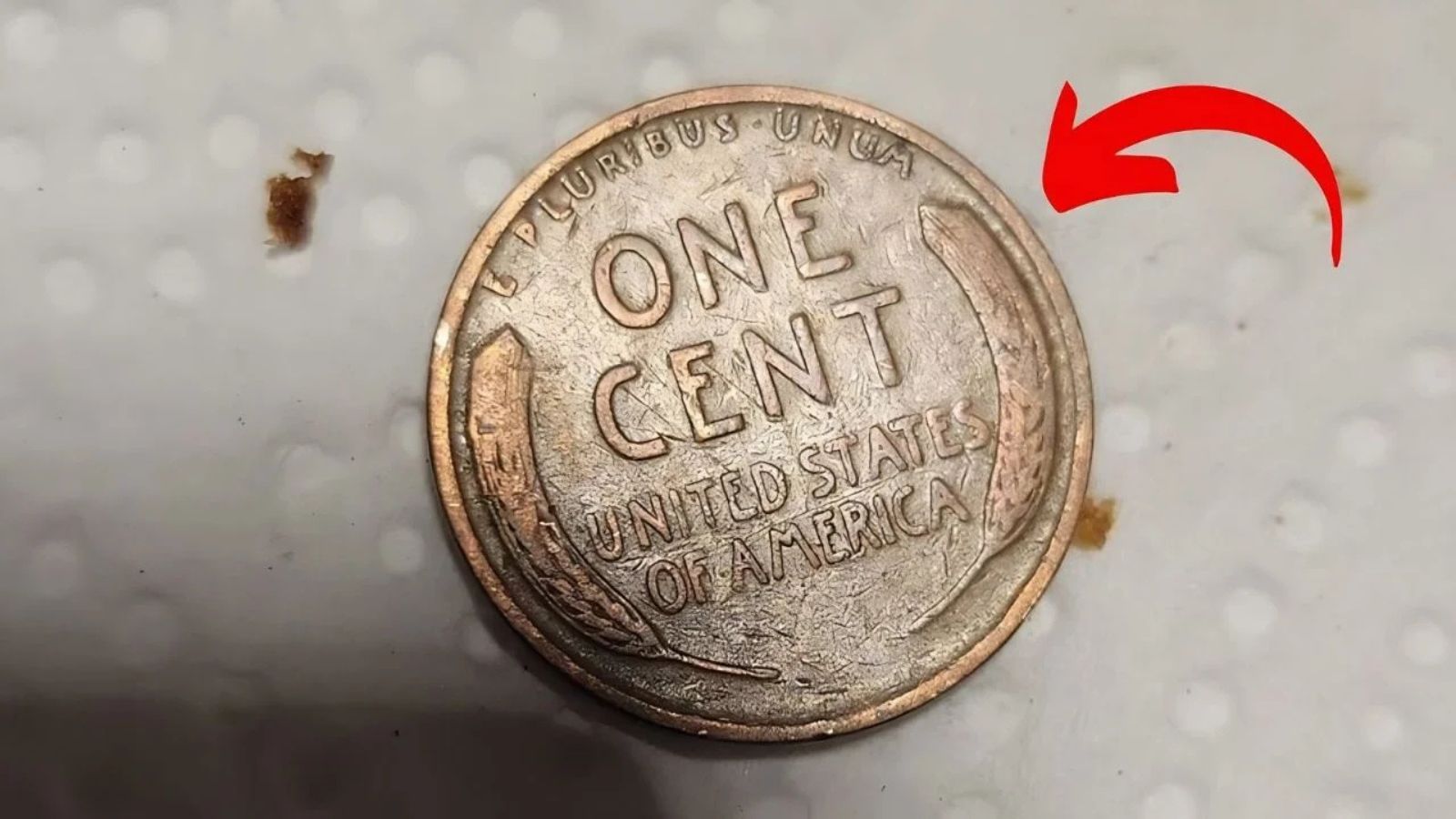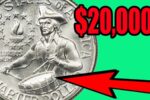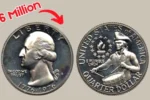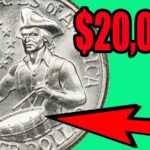In the realm of coin collecting, few coins carry the historic weight and numismatic allure quite like the Lincoln Wheat Penny. Originally introduced in 1909, this iconic piece of American currency has fascinated collectors for over a century. What began as a modest tribute to President Abraham Lincoln’s centennial birthday has transformed into a cornerstone of American coinage, particularly because of a few ultra-rare versions that command astonishing prices. Among these rarities lies a legend: a Lincoln Wheat Penny rumored to be worth $1.5 million, possibly still circulating in everyday commerce.
FTB $6000 Stimulus Checks 2025: Stimulus for Everyone? Eligibility & Payment Dates
Lincoln Wheat Penny: Historical Significance
The Lincoln Wheat Penny, often affectionately referred to as the “Wheatie,” was the first U.S. coin to feature a real historical figure. Designed by Victor D. Brenner, the obverse depicts a detailed portrait of Abraham Lincoln, while the reverse displays two stylized wheat ears flanking the words “ONE CENT.” This design lasted until 1958, after which it was replaced by the Lincoln Memorial reverse.
The Lincoln Wheat Penny served not just as currency, but also as a symbol of American pride, especially during challenging times such as the Great Depression and both World Wars. Its design, affordability, and cultural relevance made it an object of fascination among young collectors and seasoned numismatists alike.
Lincoln Wheat Penny: Composition and Variations
From 1909 to 1982, most U.S. pennies were made primarily of copper. However, due to metal shortages during World War II, the Mint had to adjust its composition. In 1943, pennies were struck using zinc-coated steel instead of copper. These silver-colored steel cents are easily distinguishable from the standard bronze versions.
The intriguing twist? A few 1943 pennies were mistakenly minted using leftover copper planchets. These error coins, the 1943 Lincoln Wheat Penny made of bronze, are considered some of the most valuable coins in existence.
The $1.5 Million Lincoln Wheat Penny: What Makes It So Valuable?
One particular 1943 bronze Lincoln Wheat Penny has been appraised at an estimated $1.5 million. But why does this coin command such a jaw-dropping figure?
- Wrong Metal Composition: The U.S. Mint was supposed to switch entirely to steel cents in 1943. However, a few bronze planchets from 1942 were inadvertently used, leading to these extraordinary errors.
- Incredibly Rare: Fewer than 20 authentic examples of the 1943 bronze Lincoln Wheat Penny are known to exist today. These coins are split among public institutions and private collectors, making them incredibly scarce.
- Authenticity and Condition: For a Lincoln Wheat Penny to be worth millions, it must be authenticated by reputable grading services like PCGS or NGC. The condition of the coin—its grade, patina, and wear—also plays a significant role in its market value.
Could the $1.5 Million Penny Still Be in Circulation?
The most exciting aspect of this tale is the possibility that one of these rare coins could still be out there—tucked inside a coin jar, hidden in an attic collection, or passed through daily transactions. While most known specimens have been secured by collectors, the notion that one might still be floating around sparks the imagination of both collectors and the general public.
Stories have emerged of people discovering rare Lincoln Wheat Pennies in inherited coin collections, garage sales, or even spare change. The thrill of uncovering such a valuable piece is what makes coin collecting endlessly compelling.
How to Identify a 1943 Bronze Lincoln Wheat Penny
If you’re intrigued by the idea that a million-dollar coin might be hiding in your home, here are the steps to identify a potentially valuable Lincoln Wheat Penny:
- Check the Date: Focus on 1943 pennies. Most are steel, but any copper-colored 1943 coin warrants closer inspection.
- Use a Magnet: Steel pennies are magnetic. A 1943 penny that doesn’t stick to a magnet might be a bronze error.
- Observe the Color: Bronze pennies have a reddish-brown hue, unlike the silver-gray color of steel cents.
- Weigh the Coin: Bronze Lincoln Wheat Pennies weigh approximately 3.11 grams, whereas steel ones are about 2.7 grams.
- Get It Authenticated: If your 1943 penny passes the above tests, send it to a professional grading service for authentication and valuation.
Beware of Counterfeits
The high value of the 1943 bronze Lincoln Wheat Penny has unfortunately led to numerous counterfeits and altered coins. One common scam involves modifying the “8” in a 1948 penny to look like a “3.” Such alterations can be hard to spot with the naked eye but are easily detected by professional graders.
When buying or selling valuable coins, always use reputable dealers and services. Trustworthy authentication is crucial in distinguishing genuine rarities from clever fakes.
Lincoln Wheat Penny: Other Valuable Editions
While the 1943 bronze penny is the crown jewel, several other Lincoln Wheat Penny varieties are also worth substantial amounts:
- 1909-S VDB: This first-year issue was minted in San Francisco with designer Brenner’s initials (VDB) on the reverse. Only 484,000 were made.
- 1914-D: A rare date from the Denver Mint, this penny can fetch thousands of dollars in high-grade condition.
- 1922 No D: This error coin was produced when the Denver Mint’s “D” mintmark failed to strike properly. It’s another hot item among collectors.
- 1955 Doubled Die: Known for its noticeable doubling of the date and lettering, this coin is highly sought after.
Each of these coins can add considerable value to a collection, and the excitement of finding one never wanes.
Lincoln Wheat Penny: Tips for New Collectors
If you’re new to the world of coin collecting and the Lincoln Wheat Penny has sparked your interest, here are a few tips to get started:
- Start With Coin Rolls: Search through rolls of pennies from banks or your own savings. It’s an affordable and fun way to discover older coins.
- Use a Coin Folder: Organize your finds using a coin album, preferably one designed for Lincoln cents.
- Do Your Research: Familiarize yourself with mintmarks, error varieties, and grading scales. Knowledge is key.
- Join a Community: Coin collecting forums and local clubs offer valuable insights, trading opportunities, and guidance.
A Treasure Hiding in Plain Sight
The legacy of the Lincoln Wheat Penny is more than just copper and design—it’s about the stories, the history, and the possibility of discovering something extraordinary. Whether you’re a die-hard numismatist or just curious about that old jar of change, the allure of the 1943 bronze penny reminds us that even in the most ordinary places, treasure might be waiting.
As you sift through your spare change or sort through old family belongings, take a closer look at those worn pennies. That simple, overlooked Lincoln Wheat Penny could very well be the key to unlocking a million-dollar mystery.
FAQs
1. What is the Lincoln Wheat Penny?
It’s a U.S. one-cent coin minted between 1909 and 1958, featuring Abraham Lincoln on the front and wheat stalks on the back. It was the first U.S. coin to depict a real person.
2. Why is the 1943 bronze Lincoln Wheat Penny so valuable?
It’s an ultra-rare mint error that occurred when copper planchets were mistakenly used in a year when steel was supposed to be the only material used. Less than two dozen are known to exist.
3. How can I tell if I have a valuable Lincoln Wheat Penny?
Check the date, test with a magnet, observe the color, and weigh the coin. If you suspect it might be rare, have it authenticated.
4. Where can I sell a rare Lincoln Wheat Penny?
Through reputable coin dealers, auction houses, or coin shows. Ensure the coin is graded and certified for maximum value.
5. Are all Lincoln Wheat Pennies valuable?
While not every Wheatie is worth a fortune, many pre-1930s and error coins hold significant value depending on condition and rarity.
Keep your eyes open—you never know when a humble Lincoln Wheat Penny could turn out to be a once-in-a-lifetime find.
Some Important Link
| Telegram Group | Click Here |
| WhatsApp Group | Click Here |
| Home Page | Click Here |













